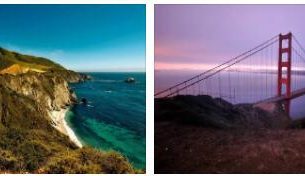THE FIRST POPULATION
When the Europeans arrived, most of the territory of today’s United States was occupied by people with heterogeneous characteristics, who came from Asia through the Bering Strait during the last ice age, about 40,000 years ago. In the state of New Mexico, artifacts have been found documenting the presence of Amerindian civilizations that arose around 10,000 BC, which owe their name to the places where they were found: Sandia, Clovis and Folsom. The native peoples and cultures of America they differentiated over the course of millennia in relation to the availability and characteristics of the occupied lands: the former were presumably characterized by nomadic groups who lived by hunting, fishing and gathering roots and fruits of the earth but subsequently, about 2000-1500 years ago, they spread the semi-nomadic or permanent settlements of agricultural peoples without however completely disappearing the tribes of nomadic hunters. There were therefore sedentary communities such as those of the Anasazi, the Mogollon and later the Pueblos, settled in the southwestern regions as early as the first millennium BC, the Muskhogee who founded the culture of the mounds, the Cherokee and numerous others present in the eastern United States, between the Great Lakes and the Gulf of Mexico, all in possession of more or less modern agricultural techniques, and other nomads, dedicated to gathering, fishing and hunting (in particular that of the American bison, facilitated following the introduction of the horse in the New World by the Spaniards), such as the Apache and Navaho, located in today’s western United States. There were also populations who in different periods passed from semi-permanent agriculture to nomadism such as the Sioux, farmers and bison hunters, who resisted the invasion of the whites. The first Indians with whom the Europeans came into contact were probably the Algonquians and the Iroquois, settled agricultural people of the eastern regions, who were defined as Indians by the Anglo-Saxon settlers. United States is a country located in North America according to ETHNICITYOLOGY.COM.
FROM THE FIRST COLONIAL SETTLEMENTS TO INDEPENDENCE
The construction of the USA as a political unit and as a geographical entity with its own well-defined spatial organization took place according to a process of progressive conquest of the territory and an awareness, on the part of transplanted Europeans, of living independently in a new country. The original nucleus is on the Atlantic shores, in the well-sheltered bays formed by the rivers that flow down from the Appalachians, which for a long time remained as an insurmountable barrier for the colonizers. Around those first bases of conquest and population there has been a progressive human coagulation which has constituted and continues to constitute, over the years, the platform, the basic element of the entire US territorial organization, although the opposite peaceful shore represent today, with its openings towards the Pacific and the Far East, an alternative to the simpler and more immediate original territorial scheme. The first bases of the population bear the names of the cities and countries of origin and this not only for nostalgia, but also for certain identities that can be identified in the newly conquered landscape with that of the motherland. Even today the areas of the most ancient settlement present human aspects that recall the mentality and spirit of the Anglo-Saxon pioneers: the residences, the organization of the small towns around the Protestant church, the cities, the agricultural landscape, the faces of the residents. New England (origin and this not only for nostalgia, but also for certain identities recognizable in the newly conquered landscape with that of the motherland. Even today the areas of the most ancient settlement present human aspects that recall the mentality and spirit of the Anglo-Saxon pioneers: the residences, the organization of the small towns around the Protestant church, the cities, the agricultural landscape, the faces of the residents. New England ( origin and this not only for nostalgia, but also for certain identities recognizable in the newly conquered landscape with that of the motherland. Even today the areas of the most ancient settlement present human aspects that recall the mentality and spirit of the Anglo-Saxon pioneers: the residences, the organization of the small towns around the Protestant church, the cities, the agricultural landscape, the faces of the residents. New England (New England) is in this sense the most conservative region of pioneering Anglo-Saxon. In the sec. XVIII the first thirteen colonies experienced a phase of great development thanks also to the commercial relations they maintained with the motherland: the ships left loaded with tobacco, cotton, furs and returned with industrial products. The businesses soon formed a rich and enterprising bourgeoisie; however, relations with England later became very difficult, also due to the exorbitant British policy which demanded heavy taxes. On the other hand, the transplanted groups showed that they knew how to organize themselves economically and socially, in complete independence. Ruled by a puritanical religious spirit, liberal, but placed in equal social conditions, open to any individual initiative and at the same time led to social cohesion given the situation in which they found themselves in those lands, the colonists soon had the strength to fight for independence, even if not everyone agreed on this. Many “loyalists” were forced to emigrate and preferred to go to the neighboring Canadian colonies thus contributing to the Anglicization of the former French rule. In 1776, with the declaration of independence, the Union formed by the initial 13 colonies was born, which progressively increased in number with the push of colonization towards the West. However, the Union did not form a homogeneous whole: even if the colonists were largely English, they found themselves acting in different environments and conditions. The North, with its ports, its commercial liveliness, the enterprising spirit of its residents, its environment suitable for multipurpose agriculture given the temperate climate,black slaves.


